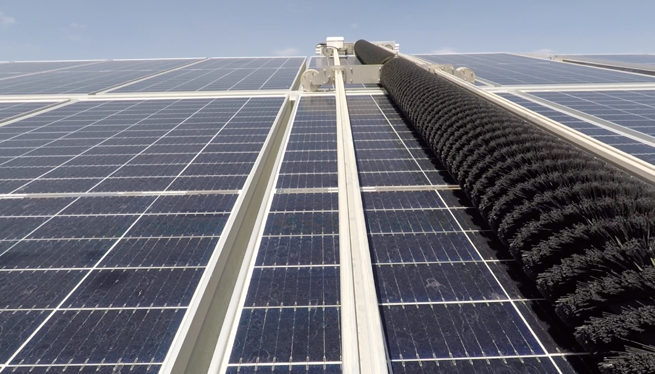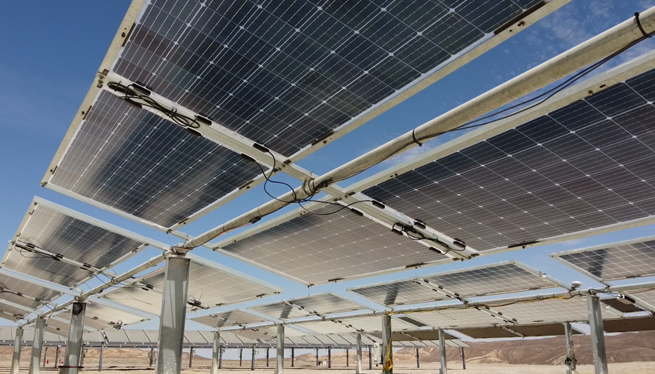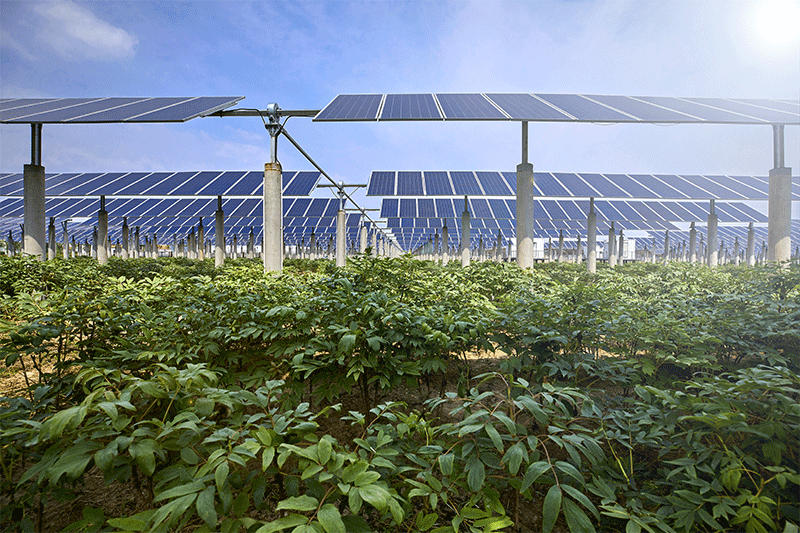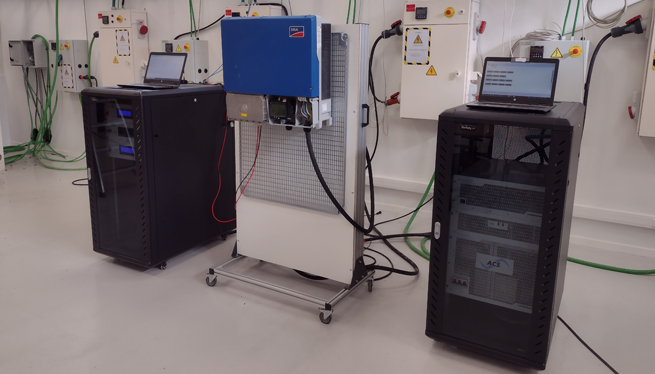ENGIE Laborelec’s highly efficient robotized PV cleaning solution is a game-changer for regular cleaning of single-axis tracking modules. Last year, its value was demonstrated in a semi-autonomous setting at the Trompezòn plant in Mexico.
Panel soiling issues at PV plants have prompted operators to instigate cleaning programmes, mostly involving tractors with big brushes working along the rows of panels. While tractors can do a cleaning job quite quickly, they are extremely expensive. Most plants have only a couple of them available, because buying an extra one would require too much capital expenditure. Tractors manoeuvring also risks damaging PV modules, especially on rough terrain. And the abundant use of diesel fuel and water significantly increases the plant’s carbon footprint.

Solar-powered dry-cleaning robots travelling across the trackers
Laborelec’s solution is much more flexible, safe, and sustainable. It uses robots travelling across the single-axis tracking modules, cleaning with dry brushes approved by PV panel manufacturers. Cleaning can take place with the panels in almost any position.
The electric robots are powered by solar energy, and the absence of water not only reduces the environmental footprint, but also eliminates the risk of inducing thermal shock on the modules.
Mounting and operating the robots is easy and can be learned quickly. As a result, in most cases cleaning can take place more frequently, which is essential because research indicates that yield diminishes significantly with just two or three weeks’ exposure to dust or rain.
Largely outperforming traditional solutions
In 2021, the solution was applied for the first time in a semi-automatic setting at the 158.6-MWp Trompezòn PV plant in Aguascalientes, Mexico. A set of eight robots were deployed, allowing several trackers to be cleaned simultaneously. Work was organized in such a way that a team of operators could keep the cleaning going, unmounting a robot finishing its job on one tracker, and moving it to the next.
“We managed to have each robot clean 22.9 trackers per day on average,” says Laborelec expert Franco Clandestino. “This means that the robotic solution can be a viable, safe, and sustainable alternative to tractors, especially considering the much lower up-front cost.”
Would you like to learn more about this project?



